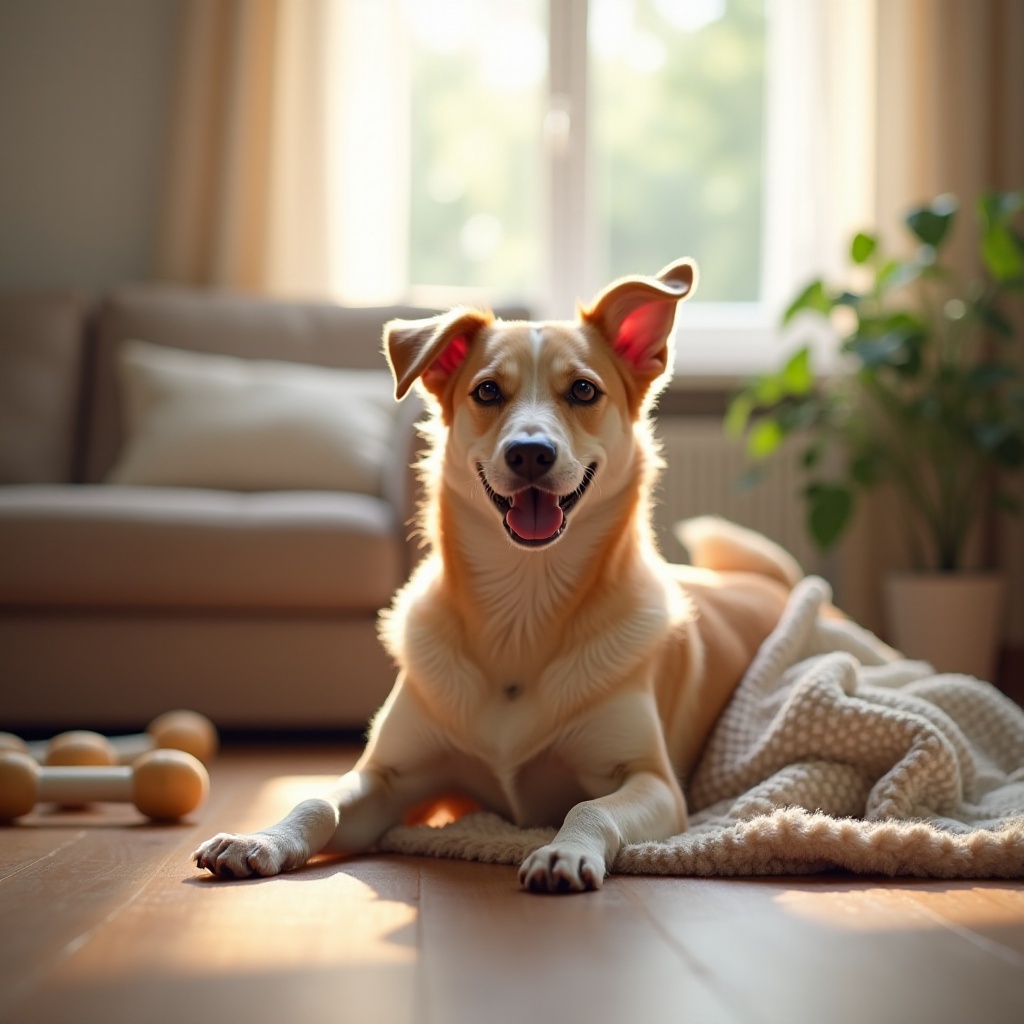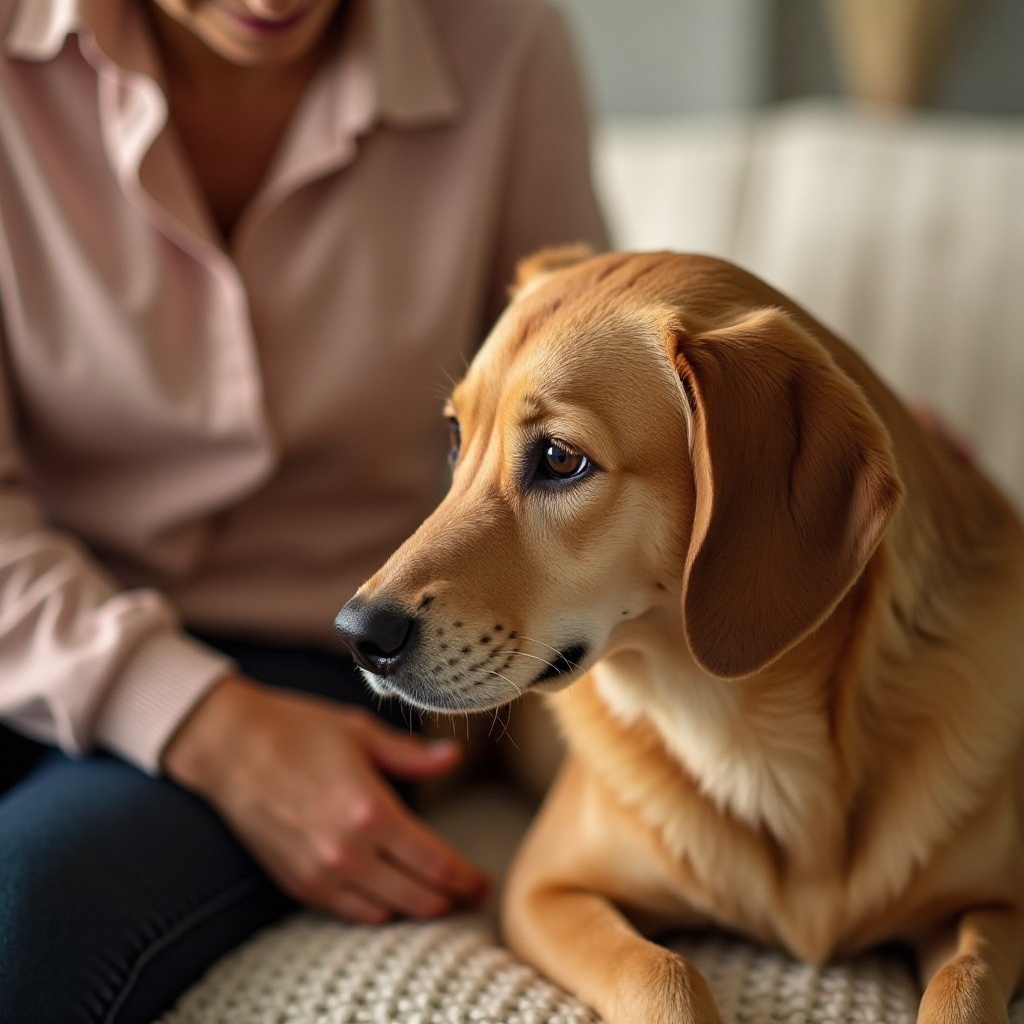Introduction
Helping your dog navigate the often overwhelming experience of being in heat can be challenging for any pet owner. Recognizing the signs, managing their environment, and knowing when to seek veterinary help are essential aspects of caring for your dog during this period. This guide covers everything you need to know to ensure your dog’s comfort and well-being while they’re in heat.

Understanding the Canine Estrus Cycle
The canine estrus cycle, also known as the heat cycle, is a natural phase in your dog’s reproductive life. It typically occurs in female dogs that haven’t been spayed and can begin as early as six months of age, depending on the breed.
This cycle consists of four stages: proestrus, estrus, diestrus, and anestrus. Proestrus marks the beginning, characterized by swelling of the vulva and light bleeding. During estrus, your dog is fertile and receptive to mating. Diestrus follows, whether your dog becomes pregnant or not, and ends with anestrus, a resting phase before the cycle begins again.
Understanding these stages helps you better anticipate your dog’s needs and behaviors during her heat cycle.

Recognizing the Signs and Symptoms
Common Behavioral Changes
During heat, you might notice heightened affection or agitation. Your dog may seek more attention or act anxious. Increased urination and mounting behaviors are common as well.
Physical Indicators of Heat
Physical signs include a swollen vulva and bleeding that can last from several days to weeks. Additionally, slight weight gain and changes in appetite may occur.
Creating a Comfortable Environment
To ensure your dog remains comfortable and stress-free during her heat cycle, establishing a soothing environment is crucial.
Setting Up a Cozy Rest Area
Provide a quiet, comfortable space with her bed and favorite toys. This area serves as a sanctuary where she can retreat and feel safe during this tumultuous time.
Hydration and Nutrition
Ensure she has constant access to fresh water and a balanced diet. Offer high-quality, nutrient-rich food to support her increased energy and nutritional needs.
Managing Hygiene
Keep your dog clean and comfortable by using doggy diapers or liners, which help contain bleeding. Regularly clean bedding and any soiled areas to maintain a sanitary environment.
Behavior Management Techniques
During your dog’s heat cycle, her behavior may change significantly. Implementing the right techniques can help manage these changes effectively.
Calming an Agitated Dog
Maintain a calm demeanor and avoid stressing her further. Utilize pheromone diffusers or calming sprays and consider playing soothing music to help her relax.
Exercise and Physical Activity Adjustments
Moderate exercise is beneficial, but avoid overly strenuous activities. Short, regular walks help manage energy levels without causing additional stress or agitation.
Using Distraction Techniques
Engage your dog with puzzle toys and interactive games to occupy her mind and divert attention from her discomfort or restlessness.

Preventing Unwanted Mating
Preventing unwanted mating is crucial for managing your dog’s heat cycle.
Supervision and Containment
Always supervise your dog when she’s outside and avoid off-leash activities. Consider using a crate or room for containment if you’re away or unable to supervise.
Proper Use of Leashes and Barriers
Use secure leashes and ensure any outdoor boundaries, such as fences, are intact and dog-proof to prevent escapes and unwanted mating.
Socialization with Other Dogs
Limit interactions with male dogs to minimize the risk of accidental breeding. Dog parks or common dog walking areas should be avoided during this time.
When to Consult a Veterinarian
While managing your dog’s heat cycle at home is possible, certain scenarios require professional assistance.
Identifying Signs of Complications
Monitor your dog for symptoms such as excessive bleeding, extreme lethargy, pain, or signs of distress. These can indicate complications requiring immediate veterinary attention.
Understanding Irregular Heat Cycles
If your dog’s heat cycles are irregular or absent, consult your veterinarian. This could be a sign of underlying health issues.
Conclusion
Caring for a dog in heat requires extra attention and patience. By understanding the estrus cycle, recognizing signs and symptoms, and providing a comfortable environment, you can help your dog through this challenging time. Always consult with a veterinarian if you have concerns about her health or behavior.
Frequently Asked Questions
How often does a dog go into heat?
Typically, dogs go into heat twice a year, about every six months. Smaller breeds can cycle more frequently, while larger breeds may have a longer interval.
Can you spay a dog while she is in heat?
While it’s possible, most veterinarians recommend waiting until the heat cycle ends. Surgery during heat can have increased risks due to hormonal changes and swelling.
What can you give a dog for pain when in heat?
Consult your veterinarian before giving any medication. They may recommend safe options to help relieve discomfort, such as prescription pain relief designed for dogs.
